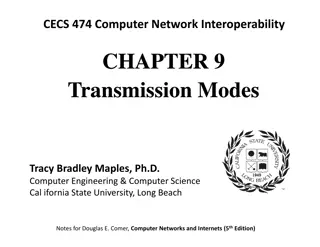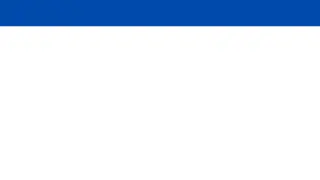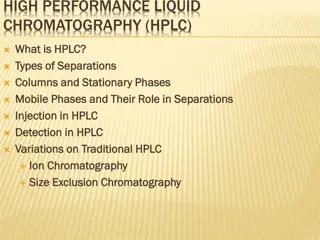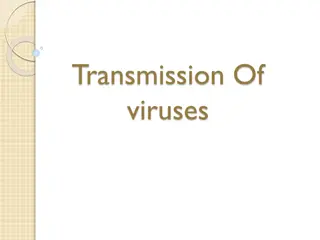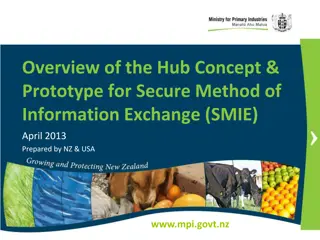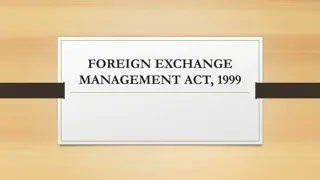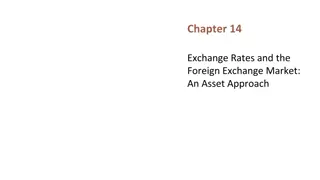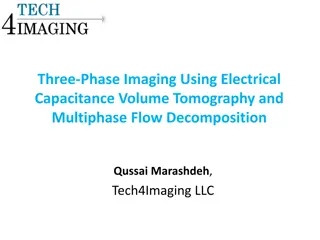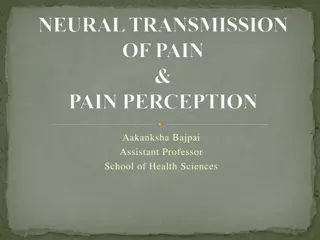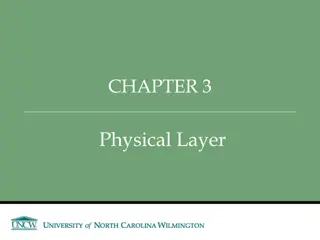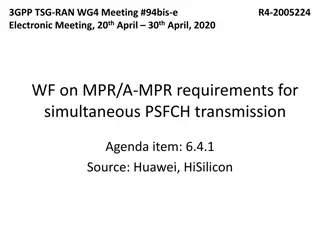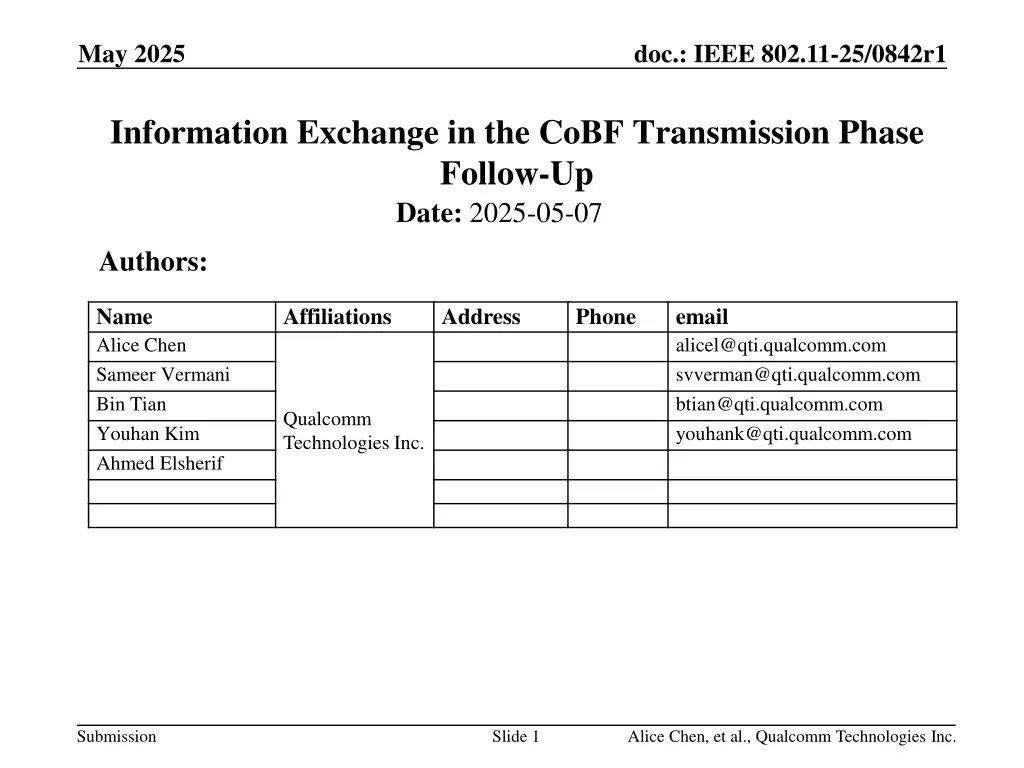
Information Exchange in IEEE 802.11-25 CoBF Transmission Phase
Explore the information exchange process between Access Points in the Coordinated Beamforming (CoBF) transmission phase in IEEE 802.11-25. Discusses frames for negotiation, parameters, and forming common preambles, with a focus on PHY information exchange.
Download Presentation

Please find below an Image/Link to download the presentation.
The content on the website is provided AS IS for your information and personal use only. It may not be sold, licensed, or shared on other websites without obtaining consent from the author. If you encounter any issues during the download, it is possible that the publisher has removed the file from their server.
You are allowed to download the files provided on this website for personal or commercial use, subject to the condition that they are used lawfully. All files are the property of their respective owners.
The content on the website is provided AS IS for your information and personal use only. It may not be sold, licensed, or shared on other websites without obtaining consent from the author.
E N D
Presentation Transcript
May 2025 doc.: IEEE 802.11-25/0842r1 Information Exchange in the CoBF Transmission Phase Follow-Up Date: 2025-05-07 Authors: Name Alice Chen Sameer Vermani Bin Tian Youhan Kim Ahmed Elsherif Affiliations Address Phone email alicel@qti.qualcomm.com svverman@qti.qualcomm.com btian@qti.qualcomm.com youhank@qti.qualcomm.com Qualcomm Technologies Inc. Submission Slide 1 Alice Chen, et al., Qualcomm Technologies Inc.
May 2025 doc.: IEEE 802.11-25/0842r1 Introduction Information exchange between two APs through the following three frames to negotiate parameters and form the common preamble in CoBF transmission was discussed in [1-4] CoBF Invite/Sync: sent from the sharing AP to the shared AP CoBF Response: sent from the shared AP to the sharing AP Consensus was reached to include certain contents in these three frames in March In this presentation, we discuss further details in the information exchange, with the focus on PHY information Submission Slide 2 Alice Chen, et al., Qualcomm Technologies Inc.
May 2025 doc.: IEEE 802.11-25/0842r1 Recap: Contents of Invite/Response/Sync Frames Sync frame (Motion #311) Invite frame (Motion #327) Category Control Minimum Number of Data OFDM Symbols Maximum Number of Data OFDM Symbols PHY Version Identifier Category Control CoBF Invite CoBF Sync Length PHY Version Identifier Bandwidth Punctured Channel Information BSS Color 1, BSS Color 2 TXOP Number of UHR-SIG Symbols GI+LTF Size Number Of UHR-LTF Symbols Number of CoBF Users STA ID BSS Color Indication MCS Spatial Configuration 2xLDPC Bandwidth PHY Common Info Punctured Channel Information GI+LTF Size Maximum Total Nss Allowed for shared AP Number of CoBF Users in sharing BSS STA ID Nss PHY Common Info Per-User Info in Sharing BSS Response frame (Motion #328) Category Control Suggested Number of Data OFDM Symbols PHY Version Identifier Extra LTF Allowed Number of CoBF Users in shared BSS Per-User Info in Both BSS CoBF Acceptance PHY Common Info STA ID MCS Nss 2xLDPC Per-User Info in Shared BSS Submission Slide 3 Alice Chen, et al., Qualcomm Technologies Inc.
May 2025 doc.: IEEE 802.11-25/0842r1 Frequency Resource Discussion Bandwidth and Punctured Channel Information is dictated by the sharing AP and indicated in both the Invite frame and Sync frame This should be compliant with the static puncturing patterns of the two APs Suggest that When the static puncturing patterns of the two APs are the same, the puncturing information in the invite and sync frames corresponds to that If the static puncturing patterns of the two APs are not the same, the sharing AP will need to reduce to a smaller BW in which the two APs have the same puncturing pattern, and the information in the invite and sync frames will correspond to that reduced BW configuration Submission Slide 4 Alice Chen, et al., Qualcomm Technologies Inc.
May 2025 doc.: IEEE 802.11-25/0842r1 GI+LTF Size The Co-BF PPDU s GI+LTF support and signaling is as follows: Support of following GI+LTF combinations to be mandatory at both AP and STA 2x LTF +0.8us, 2xLTF+1.6us, 4xLTF+3.2us Additionally, 2x LTF+0.8us GI usage for a Co-BF pair is exchanged at the group formation stage Each AP conveys if it can use 2x+0.8us GI for this Co-BF group or not No further last-minute negotiation before Co-BF transmission Invite frame from sharing AP dictates the LTF+GI combination keeping the shared AP s ability to use 2x LTF+0.8us in mind [Motion #304, [264] and 321]] GI+LTF Size is dictated by the sharing AP and indicated in both the Invite frame and Sync frame without negotiation The information should be consistent in the two frames Submission Slide 5 Alice Chen, et al., Qualcomm Technologies Inc.
May 2025 doc.: IEEE 802.11-25/0842r1 UHR-SIG Related Info UHR-SIG MCS Suggest to fix it to MCS0 Number of UHR-SIG Symbols If UHR-SIG MCS is fixed to MCS0, the Number of UHR-SIG Symbols is a simple function of the Number of CoBF Users Suggest to use minimum number of UHR-SIG symbols needed to accommodate the UHR-SIG information There is no benefit of having extra UHR-SIG symbols with padding Number of Non-OFDMA Users 2 3 4 Max Number of info bits per content channel in UHR-SIG Number of UHR-SIG Symbols (with MCS0) 52 85 85 2 4 4 Submission Slide 6 Alice Chen, et al., Qualcomm Technologies Inc.
May 2025 doc.: IEEE 802.11-25/0842r1 Other Info with Fixed Values Spatial Reuse (SR): Suggest to fix it to PSR_AND_NON_SRG_OBSS_PD_PROHIBITED Interference Mitigation (IM): Suggest to fix it to Disable LDPC Extra Symbol Segment: Suggest to fix it to 1 (for lower puncturing ratio) PE Disambiguity As in [2-3], with a fixed T_PE=20us, the PE Disambiguity becomes a fixed value of 1 according to the following Submission Slide 7 Alice Chen, et al., Qualcomm Technologies Inc.
May 2025 doc.: IEEE 802.11-25/0842r1 Summary Bandwidth and Punctured Channel Information should have consistent information in the Invite frame and Sync frame The information should be compliant with the static puncturing information of the two APs GI+LTF Size should have consistent information in the Invite frame and Sync frame For simplicity Disable spatial reuse and interference mitigation Fix the following (no info exchange): UHR-SIG MCS, LDPC Extra Symbol Segment and PE Disambiguity Use the minimum number of UHR-SIG symbols needed to accommodate the UHR-SIG information Submission Slide 8 Alice Chen, et al., Qualcomm Technologies Inc.
May 2025 doc.: IEEE 802.11-25/0842r1 Reference 1. 11-25/389r2, Information Exchange in the CoBF Transmission Phase, Alice Chen, et al. 11-25/399r1, COBF/COSR Design Follow-up, You-Wei Chen, et al. 11-25/401r0, CoBF PHY design consideration, Juan Fang, et al. 11-25/397r3, Spatial Streams Indication for CoBF TF and PPDU, Junghoon Suh, et al. 2. 3. 4. Submission Slide 9 Alice Chen, et al., Qualcomm Technologies Inc.
May 2025 doc.: IEEE 802.11-25/0842r1 SP1 Do you agree to add the following to 11bn SFD? Use fixed values for the following fields in the CoBF transmission UHR-SIG MCS is fixed to MCS0 Spatial Reuse is fixed to PSR_AND_NON_SRG_OBSS_PD_PROHIBITED LDPC Extra Symbol Segment is fixed to 1 PE Disambiguity is fixed to 1 Interference Mitigation is fixed to Disable Supporting doc: 11-25/842r0, 11-25/389r2, 11-25/399r1, 11-25/401r0 Submission Slide 10 Alice Chen, et al., Qualcomm Technologies Inc.
May 2025 doc.: IEEE 802.11-25/0842r1 SP2 Do you agree to add the following to 11bn SFD? The Bandwidth and Punctured Channel Information indication in the CoBF Invite and Sync frames are the same with the following rules: When the static puncturing patterns of the two APs are the same, the puncturing information in the invite and sync frames corresponds to that If the static puncturing patterns of the two APs are not the same, the sharing AP will need to reduce to a smaller BW in which the two APs have the same puncturing pattern, and the information in the invite and sync frames will correspond to that reduced BW configuration Note: Indication format is TBD Submission Slide 11 Alice Chen, et al., Qualcomm Technologies Inc.
May 2025 doc.: IEEE 802.11-25/0842r1 SP3 Do you agree to add the following to 11bn SFD? The indicated GI+LTF Size (for the COBF transmission) in the CoBF Invite and Sync frames is the same GI+LTF size indication format is TBD Submission Slide 12 Alice Chen, et al., Qualcomm Technologies Inc.
May 2025 doc.: IEEE 802.11-25/0842r1 SP4 Do you agree to add the following to 11bn SFD? The Number of UHR-SIG Symbols in CoBF transmission is equal to the minimum number of UHR-SIG symbols needed to accommodate the UHR-SIG information No extra UHR-SIG symbols will be allowed Submission Slide 13 Alice Chen, et al., Qualcomm Technologies Inc.
May 2025 doc.: IEEE 802.11-25/0842r1 Details APPENDIX Submission Slide 14 Alice Chen, et al., Qualcomm Technologies Inc.






